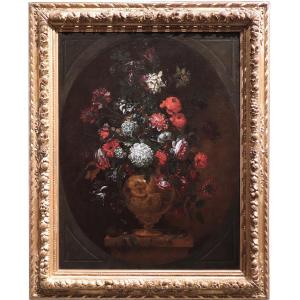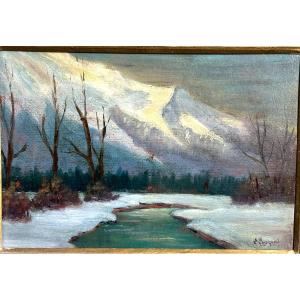(Leghorn 1883 - 1979)
Oil painting on canvas signed lower right. Stamped and signed on the back Lelio Tomei
panel dimensions: 50x70cm frame dimensions 70x90cm
He was born in Leghorn into a modest family. Here he studied in the workshop of Lorenzo Cecchi, who was also his teacher at the Scuola Arti e Mestieri, but was essentially self-taught.
In 1905 he exhibited for the first time at the Venice Biennale, in which he would participate six more times until 1930. In Leghorn, he frequented the Caffè Bardi in Piazza Cavour, a meeting place for artists from 1909, and collaborated on its decoration with 3 paintings. He also exhibited in 1912 at the important I Mostra d'Arte Livornese at Bagni Pancaldi where he was awarded the Gold Medal of the Ministry of Education. A year later, he was in Paris, where he drew many stimuli.
In his very long career, he never adhered to precise movements; his painting is rapid, with full-bodied colours, acid and dissonant timbres, and strong colour contrasts, which he uses to depict Livorno, the main protagonist of his paintings. He painted glimpses of the city by day and by night, immortalising its life, which was also made up of brawls and prostitutes, so much so that critics called him ‘peintre de la rue’ and the people of Livorno ‘Natali delle notti’, as the three canvases Scorci della Vecchia Livorno (Scorci della Vecchia Livorno) (Scorci della Livorno Vecchia Livorno) (circa 1935) in this museum testify.
In 1920, in Livorno, he was one of the founders of the Gruppo Labronico, an association of painters set up in honour of Mario Puccini, who had just passed away, to take up his and Giovanni Fattori's legacy. Natali has been its president since 1977 for the last three years of his life.
His paintings can be found in numerous Livorno homes and in some of the city's landmarks, such as the Bar Civili.
He died in Livorno in 1979, aged 95
































 Le Magazine de PROANTIC
Le Magazine de PROANTIC TRÉSORS Magazine
TRÉSORS Magazine Rivista Artiquariato
Rivista Artiquariato